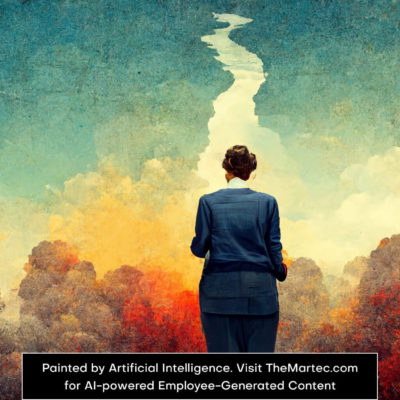
September 29, 2020 • 4 min read
Using Analytics to Develop a Better Employer Branding Strategy
Knowledge is power, and knowledge in our digital world is increasingly represented in zeroes and ones. Data is king, and has been for quite some time, but its role in employer branding (EB) is yet to be fully realized.
It’s time for that to change.
Not only does data allow us to see which groups our employer branding content resonates with, it also offers up a wealth of deeper insights: the job that would suit them, the culture that would get the best out of them, their hopes, dreams, fears and feelings.
Branding therefore is not just about understanding what resonates with people. It’s about understanding exactly who the message resonates with, and where that message needs to be. And data can tell us what, tell us where, tell us how and tell us who.
It begins with content creation
In order to analyze data, you first need to generate it. And content is a fantastic way to do just that.
One of our key philosophies at Qualtrics is to turn employees into ambassadors – it’s literally part of our mission statement.
One of our key philosophies at Qualtrics is to turn employees into ambassadors – it’s literally part of our mission statement. We conduct brand ambassador training sessions, we send out surveys, we ask our people to share their experiences through our ‘Why Qualtrics’ stories. We make being a part of our story an enticing and exciting prospect.
The process of sourcing these stories can itself have an impact on the employee experience. It makes them stop and think about what they enjoy about life here. It lets them explore the ‘why?’ behind their work. It helps them find value and pride in what they do.
At Qualtrics, we like to think that there’s a cause in everything that we do, and we absolutely adore that cause. My grandfather worked for Chrysler his entire life, and he hated his job. A whole generation literally hated their jobs. But we’re now in an age of choice – an age where you can find real meaning in your work.
You can have a bad day working at any company, but on those bad days we like to remind our people of the good days. Having employees sit down and write out that information heightens morale, subsequently enhancing your employer brand and attracting talent. And while I’m yet to prove it with data, I believe it impacts retention as well.
But while there are some inherent positives in the simple act of creating content, how do you go about ensuring that the content itself is effective? That it resonates with the audience you want it to?
Turning content into quality candidates
At Qualtrics, we’ve worked hard to build our audience, to the point that we now have a monthly reach in the millions.
At Qualtrics, we’ve worked hard to build our audience, to the point that we now have a monthly reach in the millions. We and many other recruiters don’t need more applicants, but need better quality applicants. The ultimate goal is to have people self-select – to offer an opportunity in a way that only the most relevant eyes will be engaged by it and take action on it. Employer branding content is one of the most effective ways to do just that.
Once content is put out into the ether, you begin with basic data points: things like reach, engagement and actions. You compare the quality of these data points against what makes a quality candidate, and then create a clearly defined set of stages to measure how far the best candidates are making it through the self-selection process. Once this is all set up, you can accurately measure the percentage a certain candidate (or type of candidate) makes it through the process.
This is important because a lot of us talk about getting people through the funnel, and totally ignore the quality of those conversions. Increasing the quality of your candidates will seriously decrease important metrics like time to higher and costs per hire. As such, it’s the solution to a surprising amount of recruiting challenges.
Employer branding analytics tips and tricks
Just beginning your EB analytics journey? Here are a few lessons I’ve learned that can make the initial stages much easier.
Use in-house expertise: Your sales and marketing teams have been using analytics for years, so will bring a wealth of branding and engagement experience around what works, what doesn’t and lessons learned. Tell them about the challenge you face and ask them how they’d go about attacking it. This can also result in valuable buy-in that is so often hard to obtain from these teams.
Use the data: We have a saying at Qualtrics: free the data. The truth is that we (and most organizations) already have the data we need to answer the questions we ask, we just don’t utilize it. You need to figure out what data you’re collecting, why you’re collecting it, and how and where you can use it in order to impact not just your employer brand, but your brand as a whole.
It starts at the top: Buy-in from leadership is a non-negotiable when it comes to employer branding. Those at the top must understand this concept for it to have any chance of success. The truth is that employer branding is revolutionizing recruiting: finding talent is no longer about searching for a particular person, a needle in the haystack. It’s about building a machine that consistently offers up quality talent.
From personal experience, the best way to get buy-in is to present leaders with an early win.
From personal experience, the best way to get buy-in is to present leaders with an early win. A couple of weeks into my current role there was a concert in Salt Lake City called Love Loud, built around a message of ‘we love you for who you are’. It’s an important event in Utah, which has a high rate of teen suicide, and many of our employees attended or participated to show support.
That weekend we actually had a 300% increase in traffic to our careers site, and a similar increase in applications. It was proof that people care what we care about. When they saw that we sent employees to Love Loud, they saw that we and our team supported the message and found it important. They saw that this company stood for something, and it piqued their interest.
It’s that sort of proof that is incredibly valuable in proving the efficacy of employer branding to leadership. We’re not advertising on stage, we’re not handing out flyers, we’re simply showing people what we’re about. And it works.
Creating and developing an EB strategy demands data, analytics, strategy and buy-in. But in ticking each of those boxes, you’ll develop an approach that genuinely delivers results.
About the author: Shaunda Zilich, is the Global People Brand and Strategy Leader at Qualtrics. She enjoys her career but enjoys life more and truly thinks they are intertwined! She is on a mission to attract the right people to the right experiences connecting people’s purpose to the right experience using data and storytelling.



